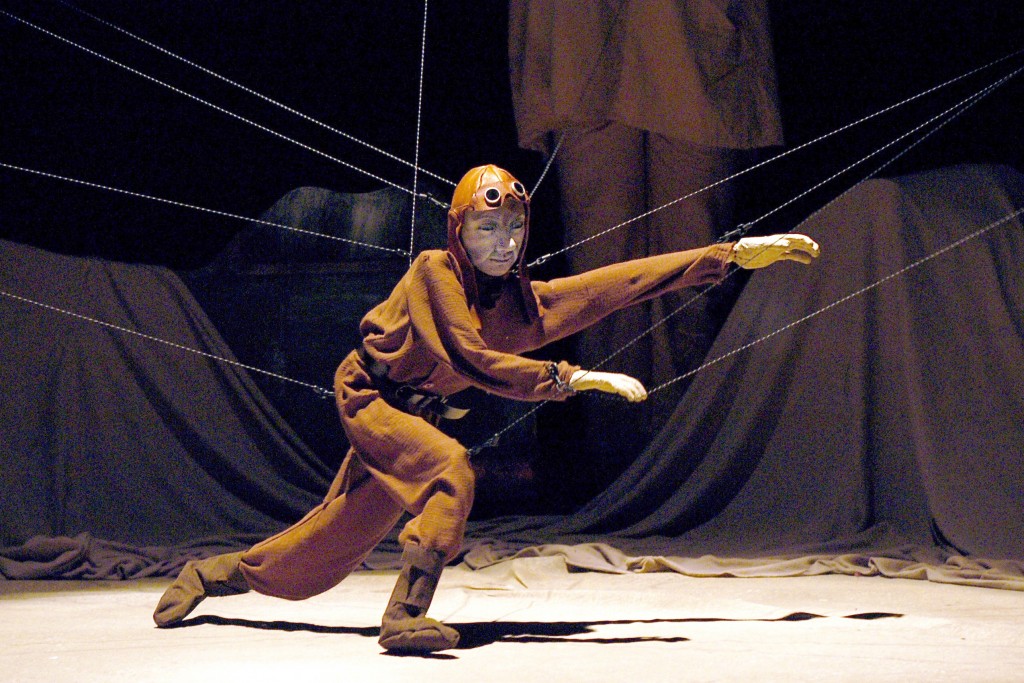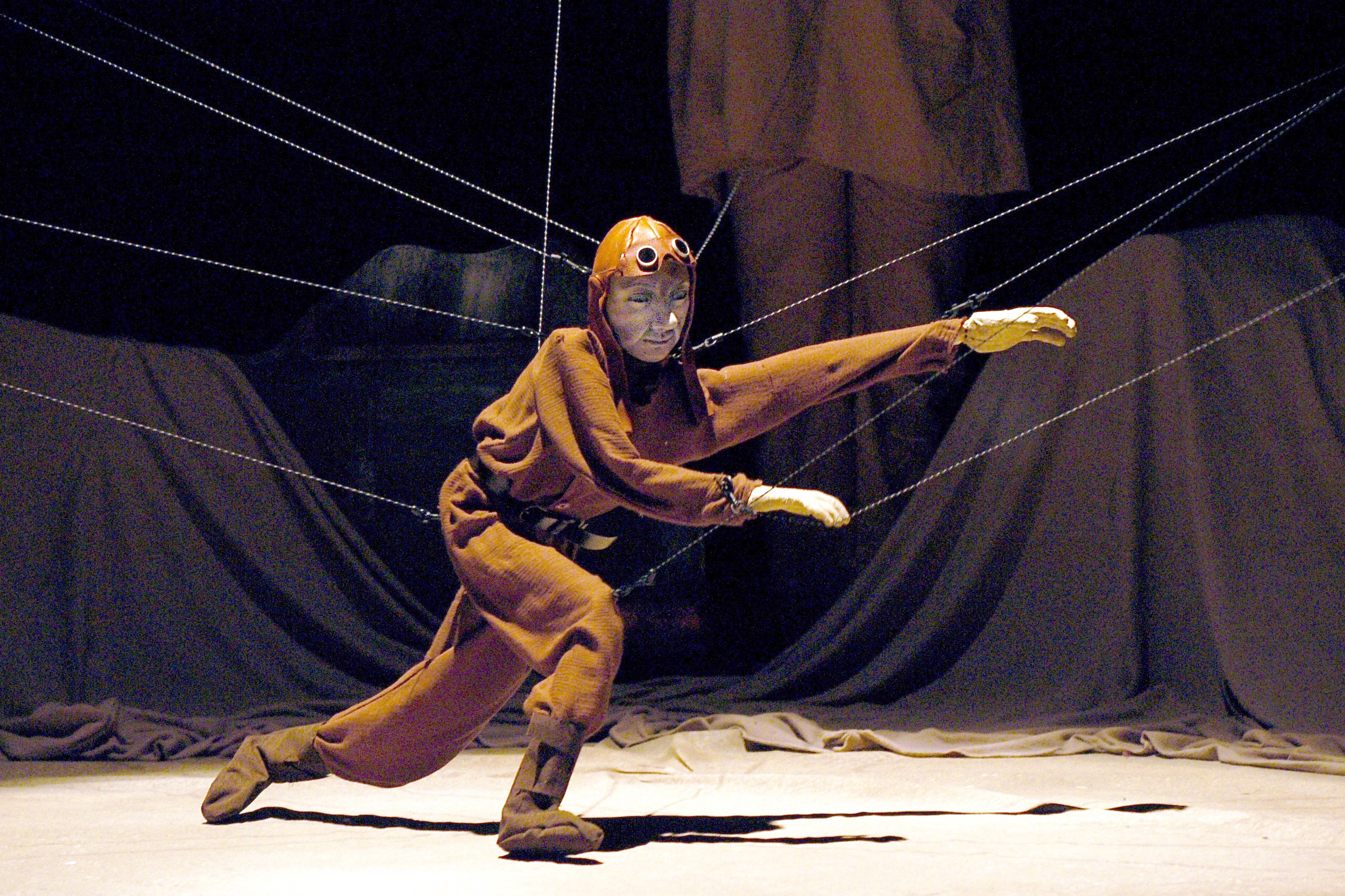Two of the most celebrated practitioners of the art of modern puppetry are Eric Bass and Ines Zeller Bass, whose three decades of innovative performance are now on display at the Ballard Institute and Museum of Puppetry in “From Thought to Image: 30 Years of Sandglass Theater.”
Vermont-based Sandglass Theater was launched in 1982, following the couple’s initial collaborations after meeting at a puppetry festival in Germany. In the years since, their work has been recognized six times with the Citation of Excellence from the American Center of the Union Internationale de la Marionette (UNIMA-USA), the highest honor in American puppetry.
“Eric and Ines look upon puppetry in terms of its history around the world as a mature art form,” says John Bell, director of BIMP, associate professor of puppetry in the Department of Dramatic Arts and a historian of puppet arts. “As this exhibition demonstrates, they’ve gone into a lot of different areas. You’ve got this fascinating mix of different materials to make shows that are always getting at ideas.”


Bell says Sandglass productions center on themes such as immigration, social issues, or politics. The current touring production is “D-Generation: an Exaltation of Larks,” which addresses dementia. The company most often use the Bunraku style of Japanese puppet theater, in which a smaller than life-sized puppet is operated by two or three visible puppeteers, a technique that is not often used by American puppet companies. The productions also present stories using a variety of art forms.
“Bringing all those elements together – Wagner called it Gesamtkunstwerk, a work of art that makes use of many forms of art – it’s always thought-provoking,” Bell says. “Seeing it here is a good way to see it. You see how it’s inviting you to think.”
Bell notes that Sandglass Theater productions are characterized by a strong sense of how movement, music, puppets, and text work together, with text as almost a physical element that is inserted and moved around, appearing and disappearing at various times.
“It’s not like a scripted drama for actors, where everything rests on the text and then the visuals illustrate the text,” he says. “Here it’s a different story; the text is one of a number of elements.”
In “Richard 3.5” from 2006, for example, the theme of the production focuses on the murders in Shakespeare’s “Richard III,” and the display includes a variety of the implements used in the murders. In the presentation, which is included in a video highlighting Sandglass shows, the use of various techniques is evident through shifting back and forth between a focus on different puppets, the singing of a ballad, and the use of particular text from Shakespeare.


With the presentation of “Between Sand and Stars” from 2005, the puppeteers found inspiration in the memoir-novel of Antoine de Saint-Exupéry, The Little Prince, to create dramatic tension in the space between puppets on the ground and aerialists above. The puppets from this production include the pilot sprawled on the ground after a crash landing and the composer Mozart, whose music is part of the performance.
There is also poignancy in the characters from 1990s “Invitations to Heaven,” a part of “The Heaven Trilogy,” which tells the story of a grandson trying to rescue the memory of his grandparents’ unhappy marriage, which Eric Bass developed from his family’s experience – the arranged marriage of a couple in a Polish shtetl, or village, who then emigrate to the United States.
And in the 1997 production “Never Been Anywhere,” the simple but elegant story of life in Vermont circa 1940, based on the writing of Castle Freeman Jr. (Go With Me), two farmhands are sent out to bury a dead draft horse, which is made of logs.

In the artists’ statement opening the exhibition, the Basses say: “For us it is interesting to reflect on our evolution. We began by making theater based in dreams, but tinged with a strong sense of the weight of history, and of the importance of memory. We see all of these qualities are still part of our work, but in different ways than they were back in the 1980s.”
Bell describes the couple as “ahead of their time,” in using the Bunraku-style tabletop performance technique, noting how many of today’s young puppeteers are following their path.
“A lot of young puppeteers are getting into tabletop work, puppeteers from the Puppet Arts program, for example, who are just starting out,” Bell says. “It’s a sign of the richness of modern American puppet theater that draws from what is essentially the Japanese technique and combines it with this European sense of serious content for puppet theater, and then things like the rootedness in Vermont.”
“From Thought to Image: 30 Years of Sandglass Theater” continues through April 10 at the Ballard Institute and Museum of Puppetry, One Royce Circle, Storrs. For more information go to the Institute’s website.



